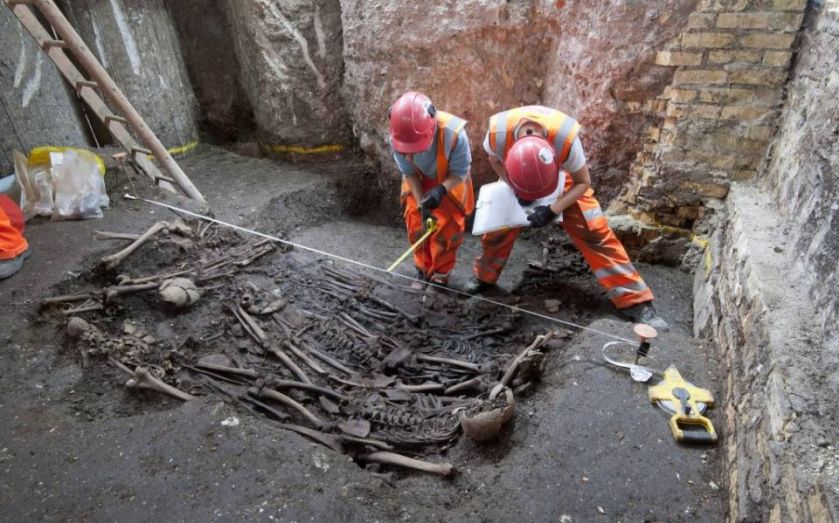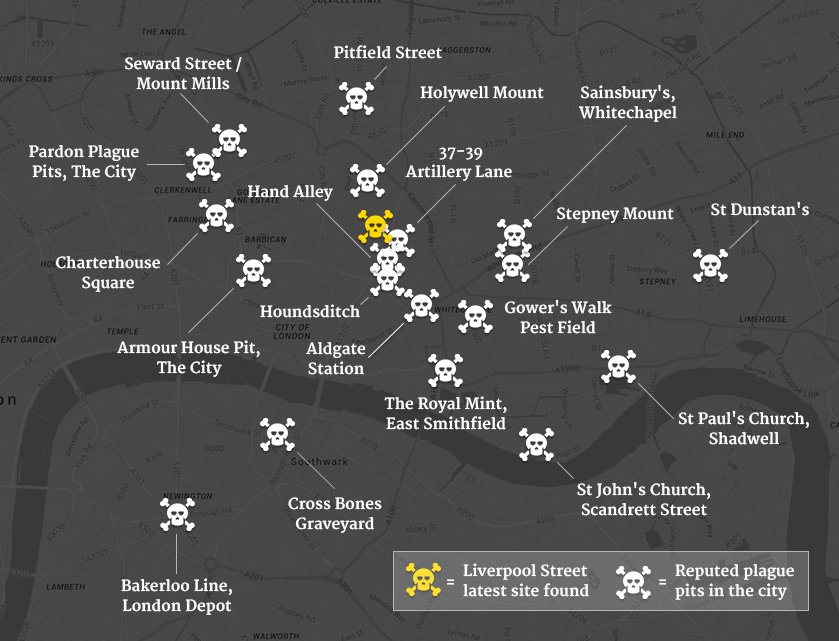After Crossrail’s gruesome discovery we’ve mapped all the City of London’s plague pits: Do you work near one?

Crossrail is unearthing all sorts of secrets from London's past. Today, people behind the major infrastructure project revealed that excavators had found 30 skeletons near Liverpool Street – victims of a “catastrophic event”, thought to be the Great Plague of 1665.
“This mass burial, so different to the other individual burials found in the Bedlam cemetery, is very likely a reaction to a catastrophic event,” said lead archeologist Jay Carver. “Only closer analysis will tell if this is a plague pit from The Great Plague in 1665 but we hope this gruesome but exciting find will tell us more about the one of London’s most notorious killers.”
The £14.8bn scheme is offering us a glimpse into the capital's past. But it's not just through the course of Crossrail's 100km route that you can find the plague pits of London.

Beak mask at the ready… it's time to find out if you work near a plague pit (Source: Getty)
Between 1665 and 1666 – when the Great Fire of London finally put an end to the epidemic – more than 15 per cent of the capital's population died as a result of the bubonic plague. That's around 100,000 people in the space of two years.
They were buried in what is thought to be hundreds of so-called plague pits around London and the surrounding areas. At first many of them were buried in churches, but as the death toll rose dedicated plague pits were built as the final resting place of these victims.
Not all of them have been found but Historic UK has been compiling a list of confirmed sites. Check out the map below to see if you live or work near any of the sites in the City of London – you never know when you might need to get your hands on a beak mask…

It's the pits
Want to know more about how Crossrail came across this latest plague pit? Check out the video below.